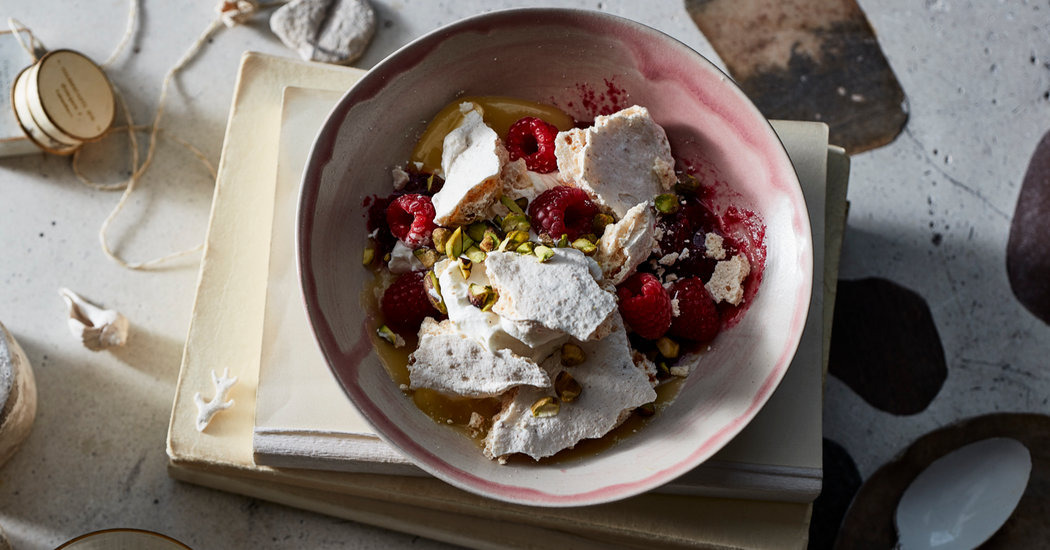
I got my first baking job through a friend of a friend of a friend and lost it a month or so later. I had no experience as a baker, no training, but I got lucky: The restaurant, the long-gone Soho Charcuterie, needed an extra pair of hands when my name came up. I was hired on the spot and given two specific jobs to do each day: make 100 chocolate cookies and bake a few chocolate cakes with whiskey and raisins. As both of the house specialties were similar to recipes I’d made at home, all went well. And then, one day, I had what I thought was a good idea. Without telling anyone, I made the cake with a few changes: I substituted Armagnac for the whiskey, pecans for the almonds, and prunes, not everyone’s favorite fruit, for the raisins. That’s when I was fired for “creative insubordination.” If I’d been less defeated, I might have seen that the real reason I was fired was that I was caught being myself.
Ever since I began baking at home, I’ve been a fiddler. My husband calls me a what-iffer: No sooner do I make something than I ask, “What if?” What if instead of rolling out the cookie dough, I scoop it? What if instead of scooping it, I shape it into a log and make slice-and-bake cookies? What if I just press the whole kit and caboodle into a pan and make one big cookie? The questions keep coming, and I keep tinkering to see what the answers can be.
When I started writing cookbooks, I thought I’d have to stop noodling. I was certain that, unlike the “Choose Your Own Adventure” books my son loved as a child, my recipes should have only one sure path. But before my first manuscript was complete, I felt compelled to add what I called “playing around” suggestions to all the recipes that I’d privately what-iffed. In the world of baking, where the craft is so often described as “precise” or “scientific,” it was fun to leap beyond the expected and to encourage others to do the same.
For sure, there are rules in baking — fewer dos than don’ts and some math. You shouldn’t change the proportions of liquid to dry ingredients or veer off course when it comes to how much fat you use. You mustn’t alter the amount of leavening in a recipe — each teaspoonful has only so much puff power. You can’t substitute flours willy-nilly, and you should stick to the order in which ingredients are mixed together.
But sometimes the taste, the texture and the look of a recipe are up for insurrection. It’s easy to change a spice or add, banish or go heavy or light with nuts, chips, bits, nibs or dried fruit. Mixing up the brown and white sugars in a cookie can change its crispiness or chew. Recipes for layer cakes can be multiplied to make towers or rejiggered to become sheet cakes. Muffins can sometimes become loaf cakes.
While not all recipes can be played with, others, like the Eton mess, can taunt a baker with possibilities. If the deadline for my latest book, “Everyday Dorie,” hadn’t loomed, I might still be playing around with that one. The mess, a traditional British dessert — its name comes from its having been served at Eton College, the boys’ boarding school — is composed of meringue, strawberries and whipped cream. I made the dessert conventionally for a while, and then, when rhubarb turned up alongside strawberries in the market, I cooked the two into a compote, and it proved a good companion to the other stalwarts. Oh, and as long as I was fiddling, I folded some speculoos-type spice cookies into the meringue before I spread the marshmallowy whites out on a baking sheet to dry in the oven’s low heat. At last, I had an Eton mess I loved enough to include in my book, but I couldn’t turn the page.
The idea that this typically warm-weather dessert might be good for Thanksgiving or even Christmas had grabbed my imagination, and soon I was back in the kitchen. What I ended up with is a fall-into-winter rendition. I kept the meringue and the whipped cream — it couldn’t be a mess without them — but I added a quickly made cranberry jam, flavored with orange juice and minced ginger, and a lemon curd with pucker. A few fresh raspberries too. It’s light enough to be the final indulgence in a copious feast, but that’s an aside. It’s a triumph because of the counterpoints: sharp against sweet; crunch against creamy; rich against lean; tart against soothing. And its colors. And its lack of pretensions — it’s beautiful, but not fussy.
My deadline came and went. My book is out in the world, and the chance to add anything has passed. But I still think about the Eton mess. What if, when summer comes, I make the mess with peaches? And blueberries? And maybe verbena? What if? What if?
Recipe: Cranberry-Lemon Eton Mess | Lemon Curd



